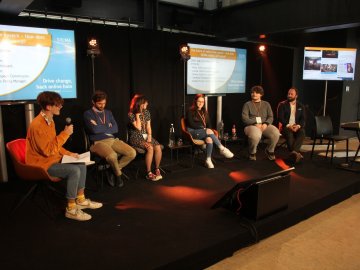As part of our efforts to hack online hate, SELMA partners are preparing a European awareness week against online hate speech, which will take place in October 2019. It will be a week full of actions aimed to share our response to online hate with different stakeholders and engage them in our activities.
Building towards that moment, we now start a SELMA journey in which, every month, we will focus on a different dimension of the online hate speech phenomenon. This monthly focus will foster a better understanding of how hate speech affects people, how we can respond to it and how we can affect positive change at a wider societal level.
Understanding the reasons behind hate
Our first focus is "Hacking into the head of haters." We cannot avoid hate because it is part of the human being. Those involved in the creation or promotion of hate speech often do so for a variety of reasons. If we understand the reasons behind the dissemination of hateful messages, we can develop strategies to redirect it for not to be harmful. During this month, we will explore the reasons why people spread hate online.
According to a research carried out by the SELMA project, the online world is fertile ground for polarisation for a number of socio-psychological reasons:
- Self-presentation. Young people have always been eager to explore their personal identity, consciously creating an idealised self-image, looking for mutual recognition among their peers. This also happens in the offline world; yet, the ease of access to others and the freedom to tailor and polish one's characteristics are dramatically different. As young people navigate the social landscape online, they continuously explore more or less favourable identity characteristics.
- Group-categorisation. While categorisation is a fundamental human cognitive process to recognise and understand reality, it can also lead to the formation of stereotypes and, by extension, prejudice. As identity groups become more defined and distinct from one another, there is risk to simplify individuals into stereotypical caricatures, perceived as members of a specific group, based on characteristics such as ethnicity, skin colour or gender.
- Depersonalisation. In its more dramatic forms, group identification processes may move the individual to depersonalisation, acting purely in accordance with group characteristics and norms. When individuals are grouped into negative categories, they are no longer seen as unique individuals but rather as representatives of a hated group.
- Anonymity. The anonymity that online spaces provide may enhance further stereotyping and polarisation between groups by limiting the visibility of the other. Moreover, it can encourage young people to avoid responsibility for their behaviour online.
If you want to learn more about the risks, causes and consequences of online hate speech and the hate speech phenomenon in general, you can download our research report "Hacking Online Hate: Building an Evidence Base for Educators."
SELMA in action
SELMA holds the view that children and young people can (and should) be empowered to become agents of change. We believe that we shouldn't tell them what is "good" or "bad" online behaviour, but rather to enable them to engage with the problem of online hate speech and its possible solutions with creativity and critical thinking.
The SELMA Toolkit will follow this approach, and it will offer a set of principles, methods and activities that will enable educators and professionals to work on online hate speech with 11-to-16-year-old teenagers. One of its ten themes, "Why is there hate speech content out there?" focuses specially on exploring the variety of reasons why hate speech is created and begins to consider how counter-narratives can be used to reduce the spread of hate speech content. The Toolkit will be available on this website in spring. In order to allow educators to start working with young people already, we have published a preview of two activities of the theme "Why is there hate speech content out there?" here.
In our effort to understand the reasons that move people to create or disseminate hate speech, we will also publish three articles deepening on the topic:
- The personal experience of a member of the SELMA Education Task Force against online hate speech who was a hater in his adolescence. This article provides details on why people seek refuge to a ‘versus them' rhetoric because they necessitate an ‘us.' This article is also the first one of a series of guest articles in which we will ask people linked to the project why they think SELMA will make a difference.
- A look at the case of Rasmus Paludan, a Danish youtuber who shares videos promoting hate against Muslims and homosexuals, and how watching or sharing his videos, even if it is for mocking them, helps spread hate speech.
- An overview of young people's views on the reasons to hate. This article collects some of the answers provided in the focus groups that the SELMA project carried out with teenagers as part of its research programme.
Meanwhile, we invite you to join the discussion on why people hate on social media – be sure to keep an eye on our Twitter #SELMA_eu hashtag, while following us on Facebook.






